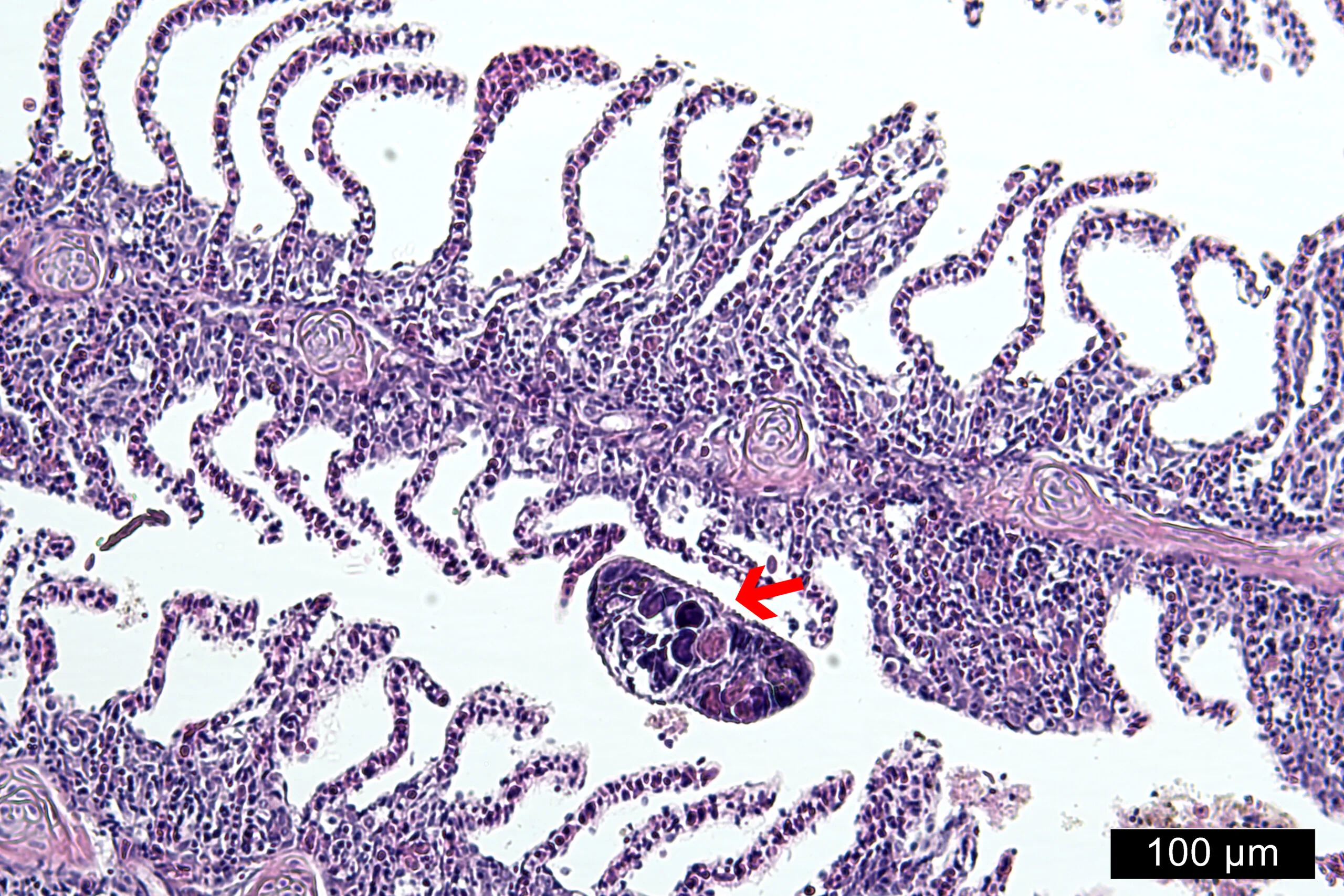Histological lesions by monogeneans in gills of Piaractus brachypomus farmed in semi-intensive systems from Peru
DOI:
https://doi.org/10.24070/bjvp.1983-0246.v17i3p173-178Keywords:
Amazonia, Anacanthorus, gills, histopathology, Monogenoidea, MymarotheciumAbstract
Piaractus brachypomus Cuvier, 1818, is Peru’s most produced Amazonian fish; however, little is known about histological lesions that monogeneans produce in their gills. When examining 40 juveniles of P. brachypomus from two commercial fish farms, Anacanthorus penilabiatus (Boeger et al., 1995) and Mymarothecium viatorum (Boeger et al., 2002) were found, with a total monogenean prevalence of 100%, with a mean intensity and mean abundance of 225.5 parasites/fish for both species. At the level of the gill tissue, lesions identified were dilation and congestion of the central vein and hyperplasia of the secondary lamella with eosinophilic and lymphocytic infiltration. The histopathological alterations caused by infection of A. penilabiatus and M. viatorum are reported for the first timein cultured P. brachypomus in the Peruvian Amazon. These findings indicate the need to improve good practices and biosafety in producing this fish to prevent or control the impact of these monogeneans.


